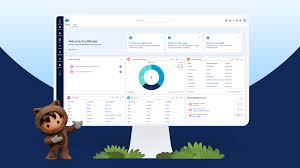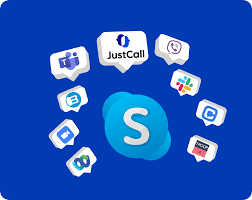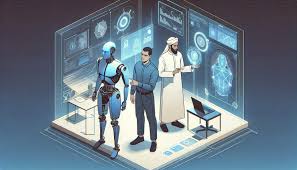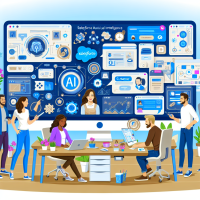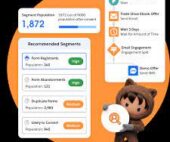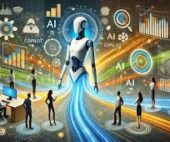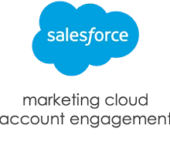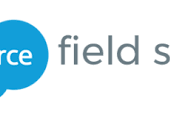In the late 1990s, a transformative moment unfolded that expanded the world to enquiring minds—the screeching of a dial-up modem, followed by a pixelated “Welcome” screen that connected users to a vast, invisible network spanning the globe. The internet revolution redefined how people interacted with information and one another, permanently reshaping digital communication. Fast forward to 2024, and a similar wave of innovation is underway. Artificial intelligence is captivating the world with its ability to understand, create, and process information. Massive datasets can now be uploaded to AI tools, which instantly distill complex insights—tasks that once took teams of analysts weeks to complete are now executed in seconds. Just as the internet linked people and information, AI is deepening connectivity across all aspects of life, from healthcare and finance to workplaces and homes. In this evolving digital divide, designers hold a critical role—not only in making AI usable but in ensuring it remains understandable, trustworthy, and human-centered. As Fei-Fei Li, Co-Director of Stanford’s Human-Centered AI Institute, states, “If we want machines to think, we need to teach them to see.” The traditional linear process of problem ideation, design, prototyping, and delivery is no longer sufficient for AI design. Instead, designers find themselves on an “AI design rollercoaster”—a dynamic cycle of constant iteration. One day, a seemingly impossible feature is prototyped, and the next, the entire approach pivots due to breakthroughs in large language model (LLM) capabilities. Many teams develop working prototypes before even defining their target audience. It is akin to painting a landscape from a moving train—compelling, challenging, and occasionally bewildering. However, this state of flux is where innovation thrives. Strategies for Designers: Understanding AI’s Capabilities and Limitations Designing for AI requires an understanding of its strengths and weaknesses. While designers do not need to become machine learning engineers, they must grasp AI fundamentals to communicate effectively with technical teams. For example, neural networks excel at recognizing patterns in unstructured data but often struggle with logical reasoning. Recognizing these limitations prevents the development of features that sound promising in theory but fail in practice. Strategies for Designers: Designing for Data Scalability Data is the lifeblood of AI systems, yet its quality and availability fluctuate over time. Designers must create interfaces that can adapt to changing data landscapes. For instance, an AI-powered personal finance app may initially rely on basic transaction data but later incorporate richer datasets for advanced investment recommendations. Interfaces should be modular and scalable, capable of accommodating evolving AI functionalities. Strategies for Designers: The Role of Prototyping in AI Design Static wireframes and basic mockups are insufficient for AI-driven products. AI prototypes must capture the responsive, dynamic nature of intelligent systems. Interactive prototypes offer stakeholders a tangible preview of AI’s potential, highlighting both opportunities and challenges early in the design process. Strategies for Designers: Developing AI Design Intuition To navigate AI design effectively, professionals must cultivate an “AI design sixth sense”—an intuitive understanding of what works well in AI-driven interactions. Immersing in AI experiences, exploring different tools, and analyzing emerging design patterns help build this expertise. Strategies for Designers: Pushing Boundaries in AI Design There are no established rulebooks for AI design—only a vast frontier waiting to be explored. The absence of rigid norms offers designers the freedom to experiment and push boundaries. Some of the most groundbreaking innovations stem from unconventional ideas once deemed impractical. Strategies for Designers: Strengthening Collaboration Between Design and Engineering In AI product design, the traditional “design then handoff” model is giving way to a more integrated approach. Designers and engineers increasingly work in tandem, refining AI experiences through continuous iteration. Some of the most effective design solutions emerge from close collaboration with technical teams. Strategies for Designers: The Next Frontier of Design As AI design continues to evolve, the parallels to the early days of the internet are striking. The excitement, potential, and magnitude of change are reminiscent of Web 1.0, yet amplified in scope. Looking ahead, the field must address profound questions: Will AI become indistinguishable from human intelligence? Will designers craft interfaces for AI-human hybrids yet to be imagined? Designers play an essential role in shaping this future—not as passive observers, but as architects of the next digital revolution. The experiences they create will define humanity’s interactions with artificial intelligence. This responsibility should inspire innovation, challenge conventions, and push the boundaries of what is possible. Call to Action Begin the AI design journey today. Choose an AI tool, explore its interface, and analyze its capabilities. Identify strengths, weaknesses, and opportunities for improvement. Share insights with fellow designers and contribute to the evolving conversation on AI design. The next breakthrough may arise from a single moment of curiosity. Like Related Posts Salesforce OEM AppExchange Expanding its reach beyond CRM, Salesforce.com has launched a new service called AppExchange OEM Edition, aimed at non-CRM service providers. Read more Salesforce Jigsaw Salesforce.com, a prominent figure in cloud computing, has finalized a deal to acquire Jigsaw, a wiki-style business contact database, for Read more Service Cloud with AI-Driven Intelligence Salesforce Enhances Service Cloud with AI-Driven Intelligence Engine Data science and analytics are rapidly becoming standard features in enterprise applications, Read more Health Cloud Brings Healthcare Transformation Following swiftly after last week’s successful launch of Financial Services Cloud, Salesforce has announced the second installment in its series Read more

